Assisted Reproduction
closeIn the butcher shop of the Futurama supermarket, located in the Vila Buarque neighborhood in the city of São Paulo, a freezer cabinet contains several sculptures made with ground meat. The sculptures are small-scale reproductions of "Two-Piece Reclining Figure: Points" (1969-1970) by Henry Moore (1898-1986). Once a week, one of these sculptures is placed in the main refrigerated display case. It is then transported to a facility for captive breeding of houseflies, kept by an entomologist, where it becomes food for these insects. Once a week, the adult flies are removed from captivity and released in Vila Buarque. Once a week, dead flies are collected from the light-trap for insects installed at the same butcher shop. Once a week, the dead flies are taken to the exhibition space at Jaqueline Martins gallery, located in the vicinities of Futurama, and are pinned, using entomological pins, onto a styrofoam sculpture, which is a full-scale reproduction of "Unique Forms of Continuity in Space" (1913) by Umberto Boccioni (1882-1916).
João Loureiro, Assisted Reproduction, 2018, Jaqueline Martins Gallery & Futurama Supermarket. Photos by Filipe Berndt

[Loop]
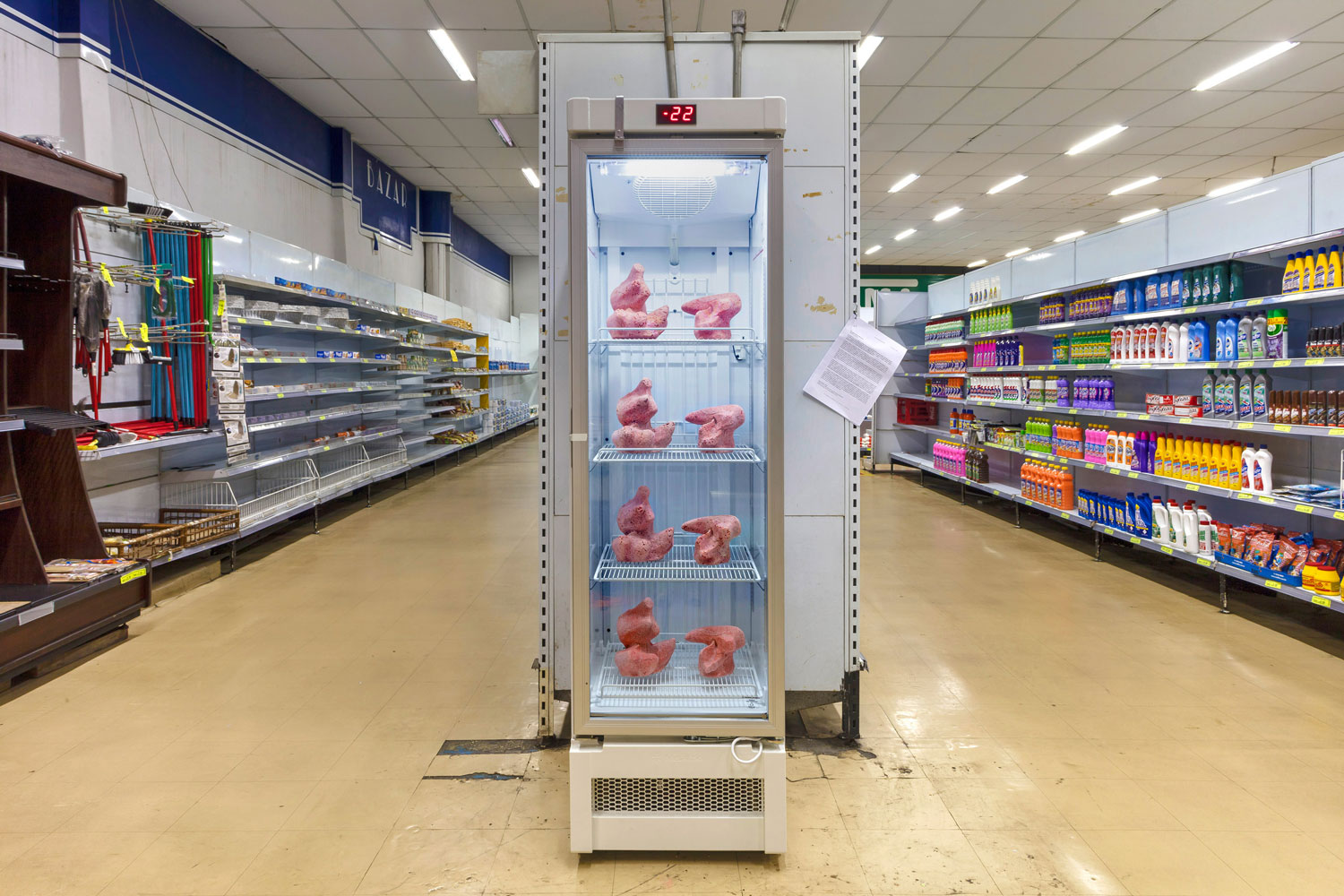
In the butcher shop’s freezer cabinets, the putrefaction of the meat-sculptures, which impersonate the reclined figure sculpted by Henry Moore, is delayed by the constant refrigeration. In the captive breeding of houseflies, the disintegration of the sculptures’ female silhouettes is accelerated by the atmosphere, which is suitable for the reproduction and metamorphosis of the flies: from egg, to larva, to pupa, up to its adult phase, when it takes its familiar winged form. The putrefaction of the dead flies is delayed by their resistant exoskeletons, which hover motionlessly over the styrofoam flesh of the man in metamorphosis, a reproduction of the man sculpted by Umberto Boccioni. "Unique Forms of Continuity in Space" is not only the pinnacle of its author's work but also one of the main symbols of Futurism, a movement originated in Italy at the beginning of the 20th century and endowed with an aesthetic and political ideology that promoted modern progress and fiercely broke with any kind of nostalgia for the past. In the Museum of Contemporary Art of the University of São Paulo (MAC USP), the original plaster of Boccioni’s sculpture is exhibited inside a showcase and there preserved for future generations. Futurama’s display cases are practically empty, which gives one the impression that the supermarket might irreversibly shut down at any moment, following the fate of its other branches.
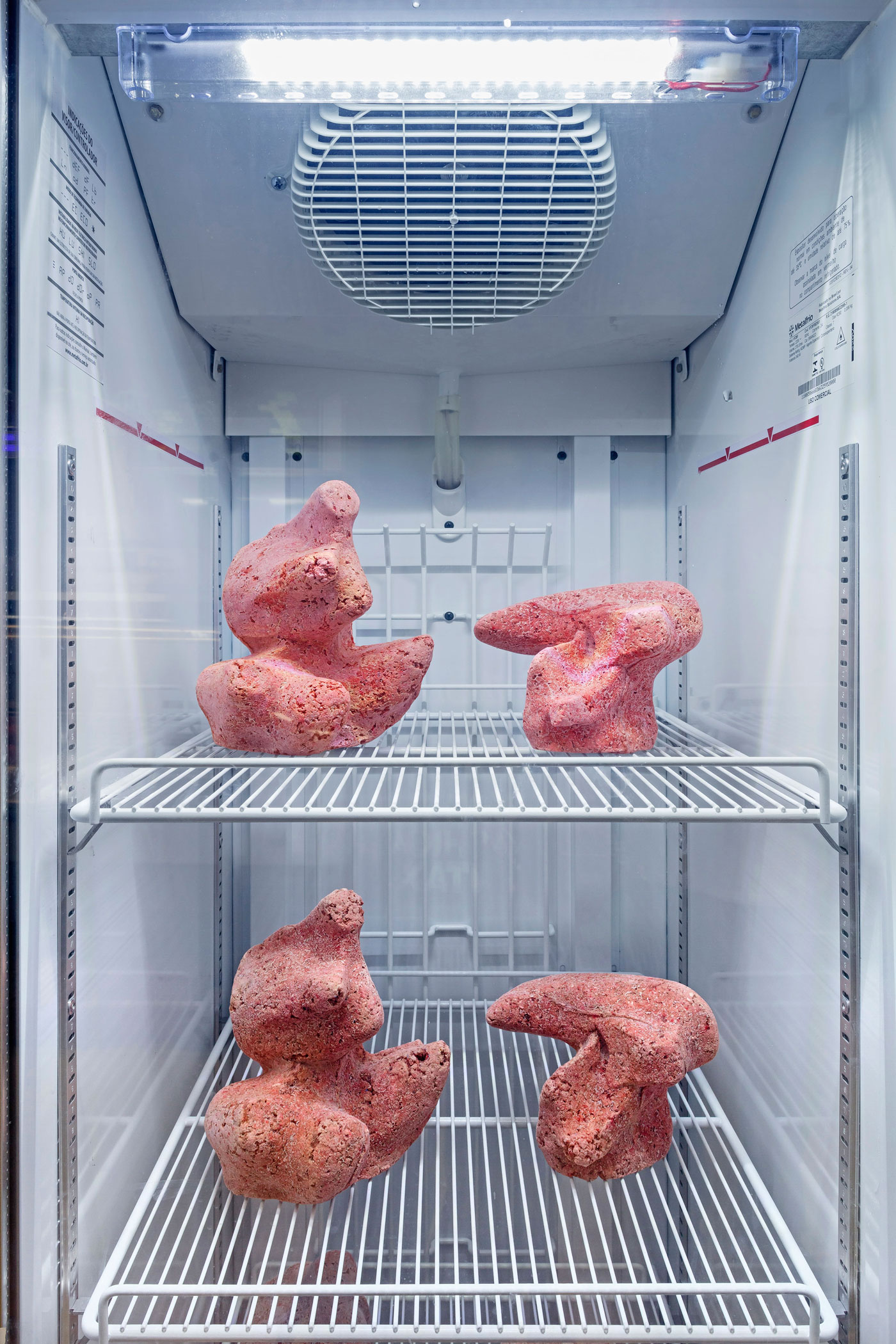
The sculptures in the butcher shop are made from the addition of ground beef to a mold with the negative shapes of Henry Moore's "Two-Piece Reclining Figure". Moore used the inverse process to build the original sculpture’s mold, by carving and subtracting matter from a compact block of plaster. The reproduction of the work "Unique Forms of Continuity in Space" was made by means of the carving of a compact block of styrofoam. Inversely, Boccioni shaped the original sculpture by means of the addition of plaster, a method that allowed him to provide a unique movement to the figure’s fluttering flesh. This initial plaster sculpture was the basis for the iconic bronze versions that were later cast. The last one of these was made for the TATE museum and swapped with MAC USP for Moore's "Two-Piece Reclining Figure: Points".1 The meat and styrofoam reproductions of both sculptures derive from sculpting procedures which involve no authorship, are deprived of any creative input and are based on repetition and copy. Inversely, the images of the original works are already immortalized in a collective unconscious that transcends the contingencies of their reproductions, and connects them directly to their ‘origins’, as well as to the persistent Art Historical archetypes, such as the "walking man" and the "reclining woman". Flies do not have distinguishable individual features. One represents all, and all have a banality and insignificance which have caused them, for centuries, to be viewed and treated with the same level of disdain the world over.
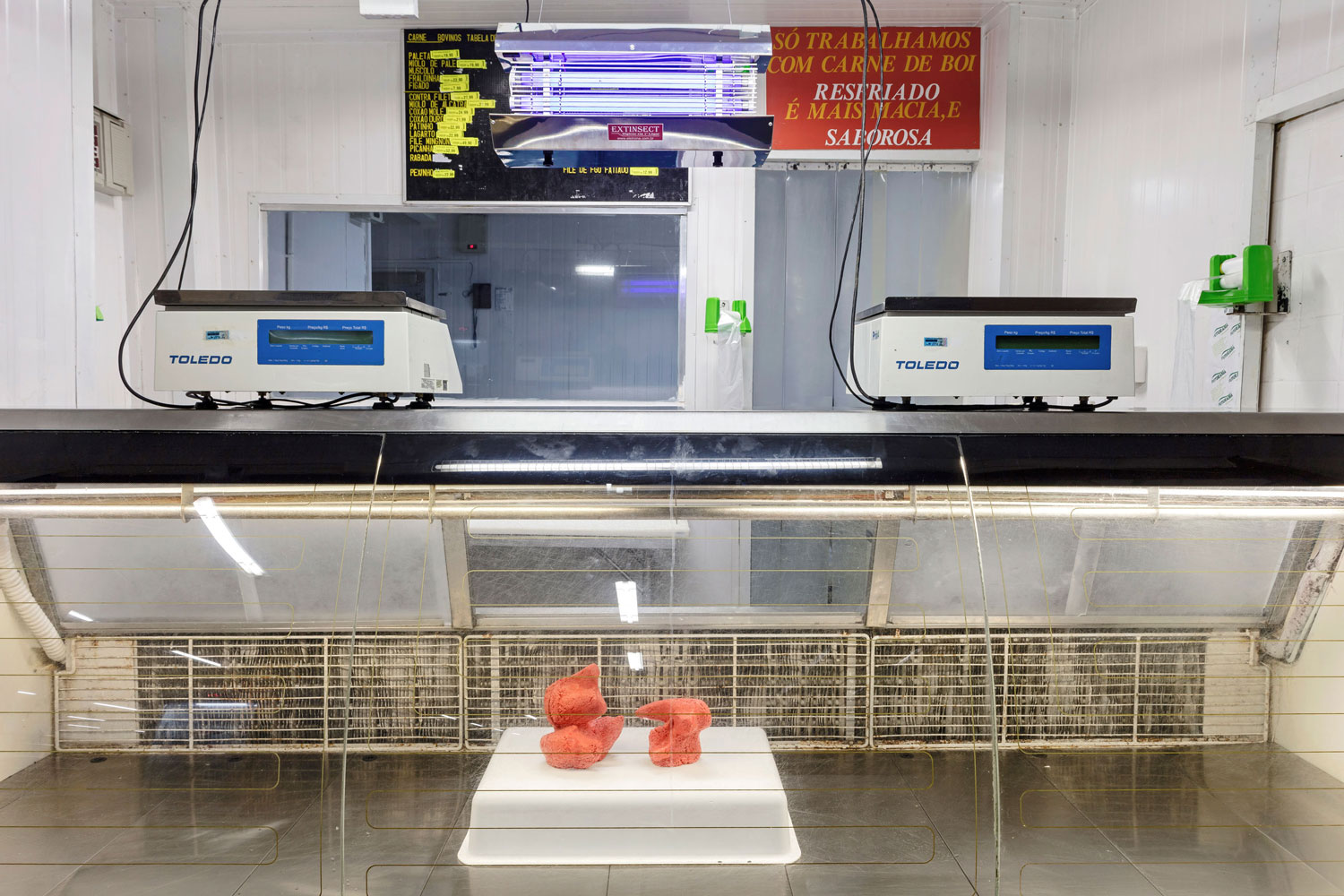
Meat sculptures are one of the dishes proposed by the Manifesto of Futurist Cooking.2 The initial text of "La cucina futurista" (The Futurist Cuisine)3 narrates an episode in which an individual, deeply anguished after having been abandoned by his lover, is saved from suicide by his Futurist friends. They do this by arranging an "anthropophagic" banquet, which consists of several edible sculptures shaped like women.4 Eating involves an animalistic drive and a carnal pleasure, as well as the introjection of social codes. Flies are not social animals, they do not gather in swarms; they cluster near sources of food, but not because their congregation provides them with any mutual benefit. Food is not only a point of convergence but also a cultural construct and the greatest paradigm of moral behavior. It implies the learning of schedules, quantities and qualities of what is ingested, and of a series of commensal codes. Commensalism also refers to an ecological or biological relationship in which two species live together – one of them benefits from the other’s leftovers, while the other derives neither benefit nor harm. Although the life of a fly seems incommensurable with that of the human being, both are intimately commensal. Ultimately, flies will feast upon Man.5
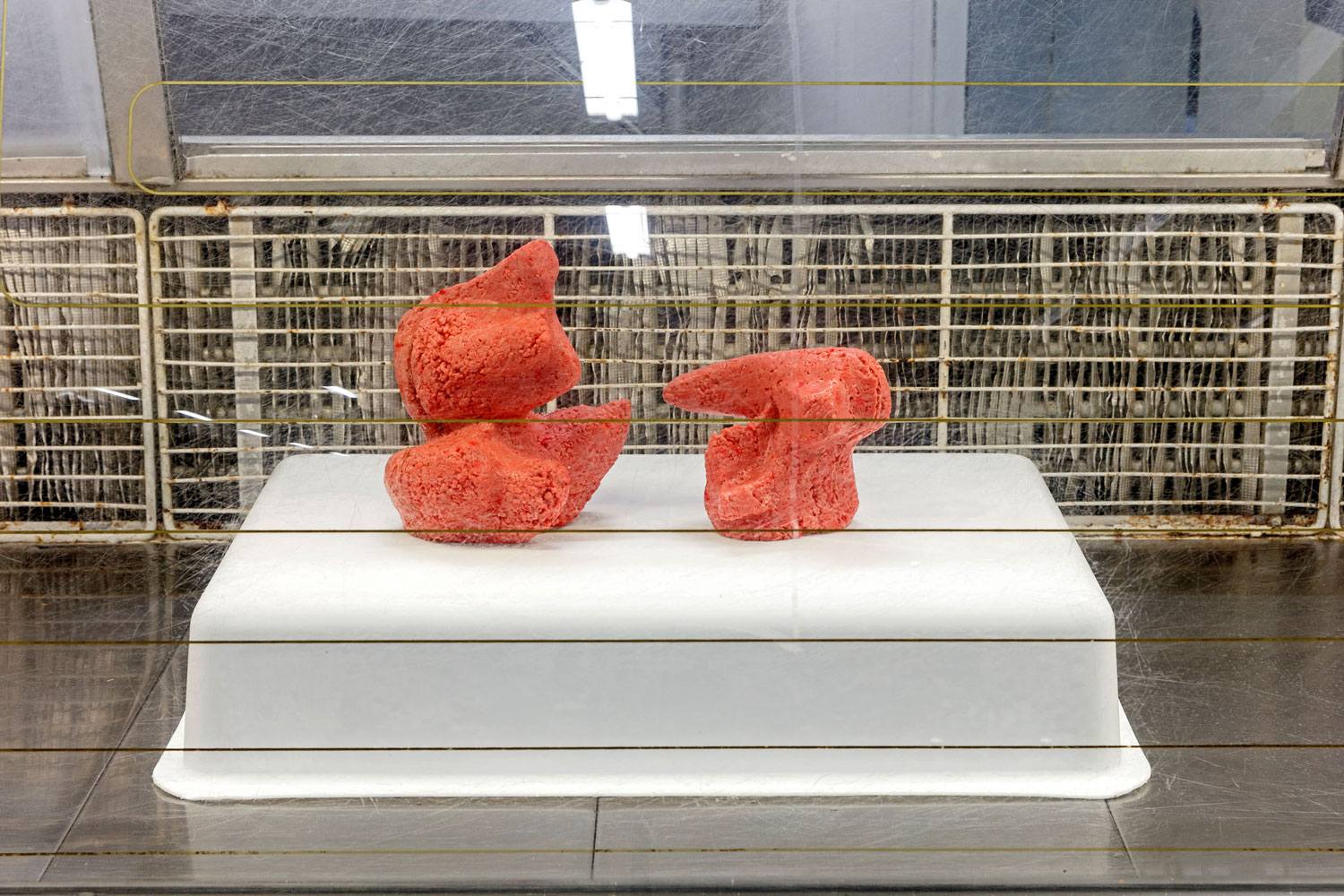
At the Futurist table, food transcends its dietary function. It is used both as an artistic medium and as an instrument of propaganda. The total renewal of the Italian food system, coveted by the movement, would be, on the one hand, a way of solidifying the concept of national cuisine and guaranteeing self-sufficiency in relation to the supply of foreign food,6 and on the other, a means to physically and psychologically prepare the population for war, which, in turn, was hailed by the Futurist Manifesto as "the hygiene of the world." The marching male figure of "Unique Forms of Continuity in Space" is the embodiment of this virile and combative man, whose body is an aerodynamic armor, immunized against time and disease.7 Henry Moore’s inert feminine figure is dependent on the movement that is conferred to it by the observer’s displacement. In Futurama’s display cases the positioning of the sculpture privileges a suitable point of view for the observation of the reclined female figure. The slight displacement from this angle makes the familiar outline “disappear”, and its abstract forms become prevalent. In Boccioni's man and Moore's woman, the sculptural body ceases to be a self-contained or clearly circumscribed universe and its boundaries become permeable. The adult flies, fed with the meat-made reclining figures, are dispersed throughout the neighborhood, thus mingling with their counterparts. Regardless of their diets, any and all houseflies killed in the butcher shop’s insect trap become sculptures.
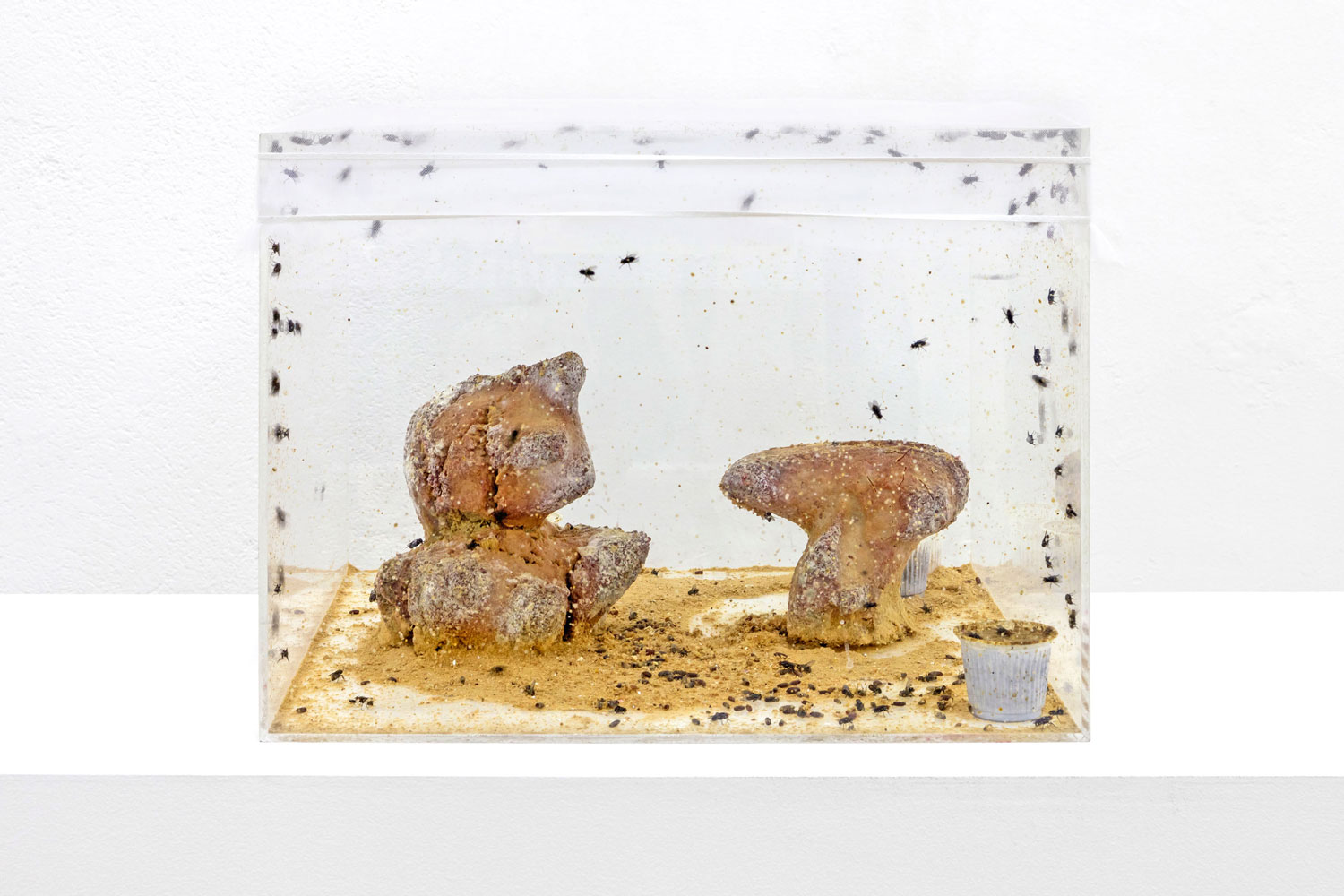
Taste constitutes a strong bodily memory because it circumvents the logical and educable part of the mind and enters the primitive brain, a place of instinct and memory. Food memories are even stronger because they involve all the senses. Food was just one of the means by which Futurism sought to introduce themselves into the population’s daily routines. The futurist man is not an animal of domesticable habits, neither are flies. By recklessly perching on food, the housefly can contaminate it with numerous diseases, which can be spread even further. Futurism was disseminated by other important vanguards, such as Constructivism, Dadaism, Surrealism, and Brazilian Modernism. But despite the movement’s "beneficent" contributions to the discipline, its association with fascist ideals guaranteed it a "malignant" reputation within Art History. Italian Fascism served as a model for other totalitarian political regimes such as the Brazilian "Estado Novo" (New State). For centuries, flies have occupied a virulent place in Natural History since they were believed to be the mark of Beelzebub, the "Lord of the Flies." It is also believed that art enters both the logical and educable realm of the mind as well as the primitive brain and the "bottom of the human soul". It supposedly stays within Man beyond their immediate contact and subsequently transforms him. Following this logical sequence, the future proclaimed by the Futurists may have culminated in our present.
João Loureiro, Assisted Reproduction, 2018, Jaqueline Martins Gallery & Futurama Supermarket. Photos by Filipe Berndt

[Loop]
João Loureiro, Assisted Reproduction, 2018, Jaqueline Martins Gallery & Futurama Supermarket. Photos by Filipe Berndt
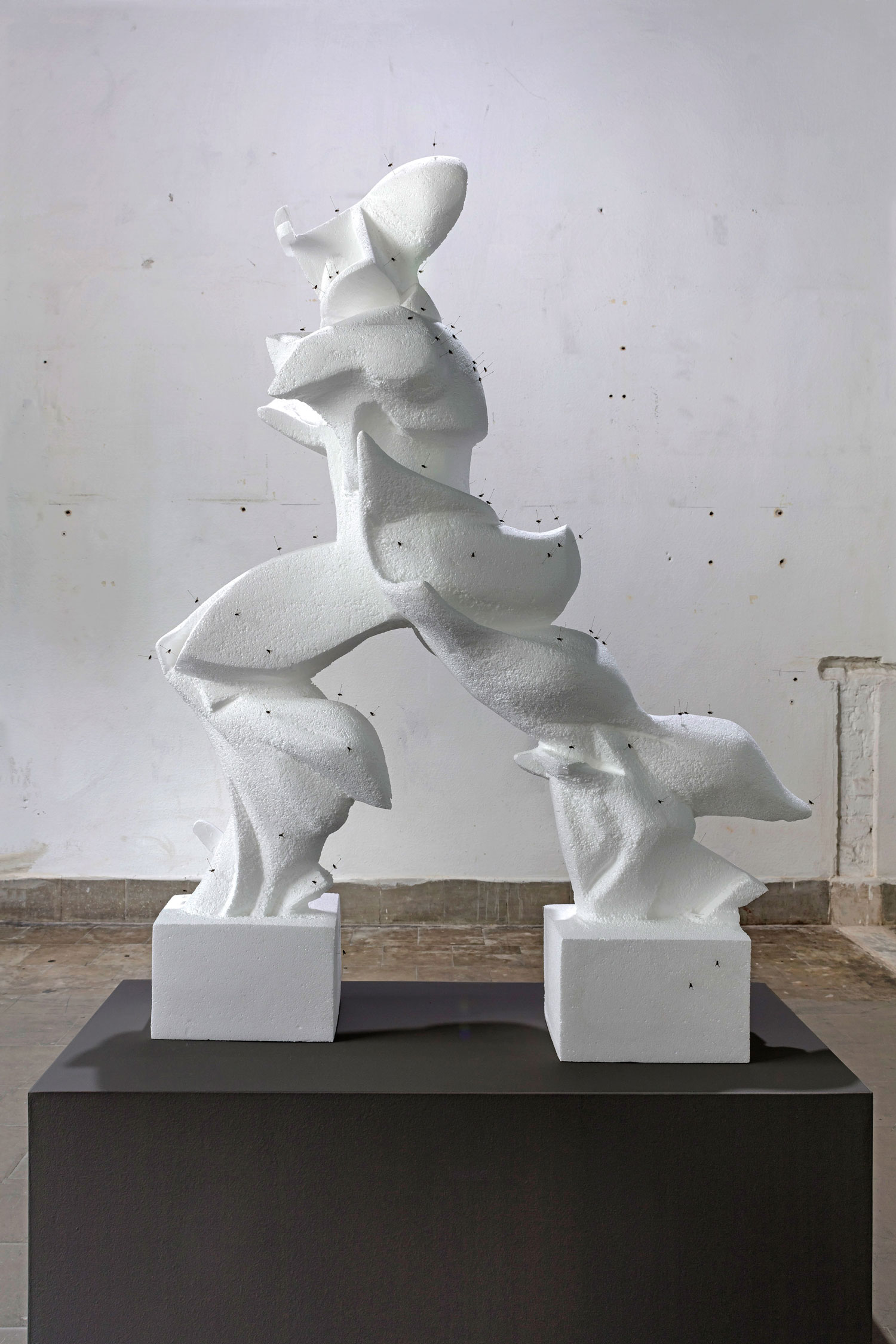
Curatorial text for Assisted Reproduction by João Loureiro, part of the project 1:1, Galeria Jaqueline Martins, São Paulo.
-
The bronze sculptures, cast after Boccioni’s death, are at MoMA (1931), the Metropolitan Museum of Art (1942), MAC USP (1960) and TATE (1972).
-
Filippo Tommaso Marinetti (founder of Futurism) and Fillìa, La gazzetta del popolo, 1930.
-
Idem, “Un Pranzo che evitò un suicidio” (A Meal that Avoided Suicide) in La cucina Futurista, Casa Editrice Sonzogno, 1932.
-
The image of women being devoured and the desire to dominate and destroy the female gender is featured in various writings by Marinetti, including: "Come si seducono le donne" (1916) and "Come si nutriva l'Ardito" (1930).
-
Steven Connor. Fly, Reaktion Books, Chicago, 2006.
-
Marinetti declared war on pasta, which, according to him, makes men slow, melancholic and anti-virile. He believed that the abolition of pasta would liberate Italy from the need to import wheat and would help to promote the Italian rice industry. This proposal suggested an alternative way to achieve Italian food self-sufficiency and was a response to Mussolini's Battaglia del Grano (1925), an economic and agricultural failure but a success in terms of propaganda. Marinetti's proposal challenged Mussolini's policy by suggesting an alternative means of achieving Italian food self-sufficiency.
-
In the Futurist’s writings, war is constantly fantasized as being a violent defloration or a vigorous copulation. Pain is replaced by an orgasmic ecstasy, and the “machine-man” conquers a feminized reality. Women are co-opted to strengthen this fiction of power and are consistently effaced as subjects. Excerpt from the Futurist Manifesto, 1909: "We want to glorify war - the only hygiene of the world - militarism, patriotism, the destructive gesture of the libertarians, the beautiful ideas for which one dies and the despisal of women."